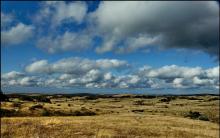In today's article we will talk about the so-called compacts. We will leave out SLR and system cameras, which in fact are also digital. They just deserve separate materials. As for compact cameras, they are completely different, as you will definitely see today. Sometimes such devices easily fit in your pocket, and in other cases they do not live up to their name at all, since they are comparable in size to DSLRs. All the gadgets we are considering today have only one thing in common - they are all the best, as evidenced by the mass of positive reviews.
Which brand of digital compact camera should I buy?
Canon

Canon's headquarters are located in the Japanese city of Tokyo. And it has been located there since back in 1937. The company was founded to produce precision optical instruments. The founders of the company had a dream - to create a 35 mm camera that, in terms of quality, would be on par with German products, which were then considered the best. They soon succeeded. Now Canon produces many digital cameras, including compact ones. The equipment of this company has a reasonable price tag and good functionality.

Fujifilm was founded in 1934. During the first years of its existence, this company specialized in the production of film and photographic films. Later, the Japanese decided to produce their own cameras. However, such products became most successful only with the advent of the digital era. Nowadays, a variety of compacts are coming off the assembly line of Fujifilm factories. Some of them offer huge optical zoom, while others are waterproof.
Nikon

Founded in 1917, the Japanese company Nikon is one of the largest manufacturers of digital photographic equipment. Its range includes SLR, system and, of course, compact cameras. All equipment has a long service life and high functionality. The company successfully produces both traditional point-and-shoot cameras and advanced devices that offer manual settings and improved image quality. Also, the company does not shy away from creating ultrazooms, the lenses of which have a very wide range of focal lengths.

There are companies in Japan that are trying to create a wide variety of cameras - from SLR to compact. But there are other enterprises - they concentrated on the compact camera segment. These include Olympus, a company founded in 1919.
With the advent of the digital era, this company failed to establish itself as a manufacturer of successful SLR photographic equipment. In this regard, the company's management decided to concentrate on compacts. Along the way, the Japanese are trying to promote the micro 4/3 format in the class of mirrorless cameras with interchangeable lenses.
The Japanese company Panasonic was founded in 1918. It differs from many competitors in that in the film era it produced only video cameras. The company's management started thinking about producing cameras only when they entered the digital age. However, Panasonic's newly launched mirror devices failed to become popular. In this regard, the company focused its attention on compacts. Most often, these gadgets are distinguished by their minimal thickness and simplified settings.
Sony

Sony managed to notice in time the moment when film cameras were hopelessly outdated. The Japanese didn’t even think about releasing them, but they didn’t want to miss out on the new market. In collaboration with Minolta, the company began developing several models of SLR cameras. All of them had support for installing Minolta lenses, which was appreciated by many photographers. The Japanese also began to produce compact cameras - they also had decent success. They are still in relatively high demand. Some compact Sony cameras have a full-frame sensor - these are the models that create the best quality images.
Rating of the best digital compacts
- Resolution and matrix size;
- Focal length range;
- Aperture built into the optics;
- Dimensions and weight of the device;
- User-accessible ISO values;
- Device reliability;
- Ease and convenience of photography;
- Image resolution when shooting video, as well as its frequency;
- Photography speed;
- Additional functionality;
- LCD display size and resolution;
- Autofocus type;
- Connectors available on the case;
- Owner complaints;
- Approximate retail price.
The best compact cameras with a full-frame sensor
Leica Q (Typ 116)

Legendary German brand. If a knowledgeable person sees such a camera in your hands, he will immediately recognize you as a professional who earns a lot of money from photography. After all, even such a relatively modest compact camera is comparable in cost to a not-so-worst car.
Advantages:
- The full-frame sensor has a resolution of 24 megapixels;
- Availability of all necessary controls;
- The matrix was created using CMOS technology;
- The user has access to ISO 25600;
- The camera turned out to be very easy to operate;
- The shooting speed reaches 10 frames/s;
- There is not only an LCD display, but also a viewfinder;
- Data transfer via Wi-Fi is available;
- Everything is fine with video recording.
Flaws:
- The camera turned out to be quite heavy;
- Very high cost;
- Discharges quickly enough;
- Fixed focal length.
Reviews of the Leica Q (Typ 116) show that this is an excellent work tool for the professional! The camera can be used for both reportage and wedding photography. However, keep in mind that you will be limited to a 28mm focal length. But the device has a very wide opening aperture (up to f/1.7), which helps produce incredibly beautiful background blur.
Sony Cyber-shot DSC-RX1R

This camera is equipped with top-end components. The lens here is manufactured by Carl Zeiss, and the matrix is equipped with a 24.3-megapixel resolution. The Japanese have tried to achieve excellent light sensitivity - as a result, the buyer will be able to set the ISO value to 102400.
Advantages:
- High-quality Sonnar optics;
- Aperture open to f/2;
- Incredibly high sensitivities available;
- The full-frame matrix was created using CMOS technology;
- The matrix resolution reaches 24.3 megapixels;
- Not a bad shooting speed - 5 frames/s;
- The 3-inch LCD screen consists of 1.22 million pixels;
- Fast and accurate autofocus;
- High-quality video shooting;
- Weighs less than its competitor - 482 grams.
Flaws:
- Fixed 35mm focal length;
- Most people can't afford it;
- Short battery life.
Reviews of the Sony Cyber-shot DSC-RX1R show that this camera has a bunch of minor shortcomings. For example, there is no viewfinder, and the LCD display is not equipped with a rotating mechanism. But all this is explained by an attempt to reduce the weight of the device so that it remains compact and light. Japanese engineers coped with this task. As for the shooting quality, in this regard this model is not at all behind the Leica we reviewed above. And many photographers will find the 35mm focal length more convenient and familiar.
The best premium compact cameras

This baby easily fits into a pocket, which is why many video bloggers choose it. The device focuses quite quickly, although it lags behind video cameras in this regard. The gadget also has a 4.2x zoom. A little, but it’s impossible to achieve more with an inch matrix and maintaining dimensions - the laws of optics are unshakable.
Advantages:
- Three-inch rotating LCD display;
- Miniature size and light weight;
- A large number of controls;
- When carried, the lens is almost completely hidden inside;
- Inch CMOS matrix with a resolution of 20.2 megapixels;
- Good optical image stabilization;
- The aperture opens to f/1.8;
- Shoots at 6.5 fps;
- There is Wi-Fi and a headphone output;
- Video with Full HD resolution and 50 fps.
Flaws:
- Not the highest ISO values;
- Doesn't last very long on a single charge.
As you already understand, this device is great for both photo and video shooting. Reviews of the Canon PowerShot G7 X talk about the good performance of the optical stabilizer, as well as fast autofocus. There are not too many controls here, but all the necessary dials and buttons are present. And the inch matrix allows you to save high-quality pictures, which are still very far from any smartphone.
Sony Cyber-shot DSC-RX100

A small camera that from a distance may seem like an ordinary point-and-shoot camera. However, in fact, it has a fairly large matrix and high-quality Carl Zeiss optics. Another difference from budget products is the presence of a focusing ring. Many fans of manual settings will be delighted with it.
Advantages:
- Minimum dimensions and weight (240 g);
- Excellent for portrait, landscape and macro photography;
- The sensor resolution reaches 20.2 megapixels;
- The optical part is made by Carl Zeiss;
- The aperture can open up to f/1.9;
- Sufficiently high ISO values are available;
- There is optical image stabilization;
- High quality 3" LCD display;
- Very high photography speed (10 frames/s);
- There are no complaints about insufficient battery life;
- High-quality video shooting.
Flaws:
- The screen could be equipped with a rotating mechanism.
Reviews of the Sony Cyber-shot DSC-RX100 show that this device successfully replaces a DSLR. Moreover, its dimensions are much smaller than any SLR camera, so you can easily take the device with you on a walk.
Only the 3.6x zoom is capable of slightly confusing us here - we are already accustomed to the fact that many compact cameras are capable of magnifying the image much more. But nothing can be done about this; a larger lens would spoil the impressions of the device, and it was impossible to achieve greater zoom with such optics - a large matrix interferes with this.
The best rugged compact camera

Rugged cameras are often used for underwater photography. They perform especially well in photographing fish and other marine life. For example, the Canon PowerShot D30 is even equipped with a blue body for these purposes, so that the device does not frighten the inhabitants of the ocean. This device also boasts 5x optical zoom. But literally three or four years ago, waterproof cameras provided only 3x magnification!
Advantages:
- Five-fold zoom allows you to stay away from sea creatures;
- Excellent water protection;
- Not afraid of dust and low temperatures;
- There is a GPS module;
- Works long enough on one charge;
- There is an optical stabilizer;
- The matrix was created using BSI CMOS technology.
Flaws:
- Video recording at 25 fps only;
- Not the best LCD display;
- Low shooting speed - 1.9 frames/s.











The most beautiful motorcycles in the world
Which sea is the cleanest in the world?
Top 10 Most Expensive Furs
The largest and most luxurious casinos in the world
Knightly orders of Europe XI - XIII centuries